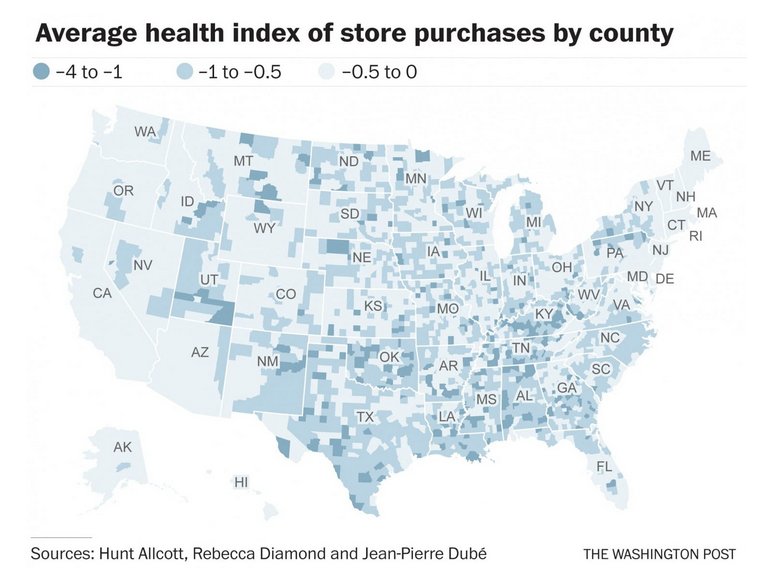According to a new working paper from the National Bureau of Economic Research, those groups include consumers who make less money, have less education, possess lower levels of nutrition knowledge and live in certain geographic areas — such as south central Montana.
“Economists have a problem with the word ‘culture,’ ” said Hunt Allcott, an economist at New York University and the paper’s lead author. But an area’s food culture, he acknowledged, “could make a big difference in the formation of food preferences.”
Allcott and his colleagues didn’t necessarily set out to study food culture. (Or to call out Musselshell, which their data indicates is the country’s least healthy county, according to grocery purchases.)
Their paper, which has not yet been peer-reviewed, analyzed 12 years of Nielsen grocery purchase data from 100,000 households across the United States, looking for patterns that explain why low-income and high-income families buy such different foods.
Economists and public health advocates have long known that high-income households tend to buy more fruits, vegetables and proteins, and that a large dietary discrepancy exists between the rich and poor. The exact mechanisms of this gap are less clear, however. They can’t be entirely explained by the cost or availability of food.




